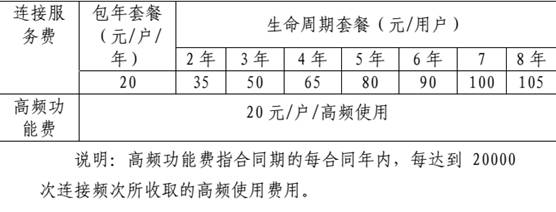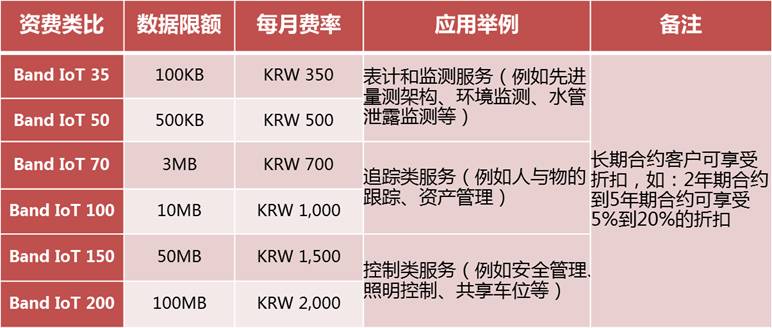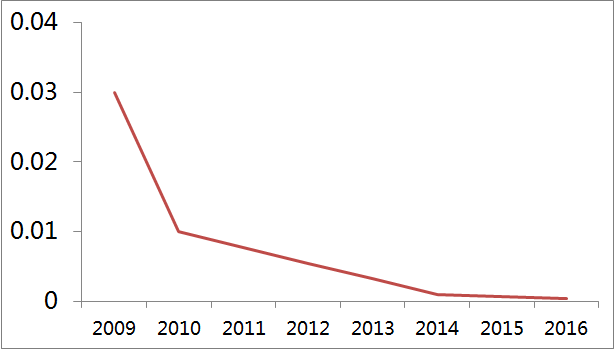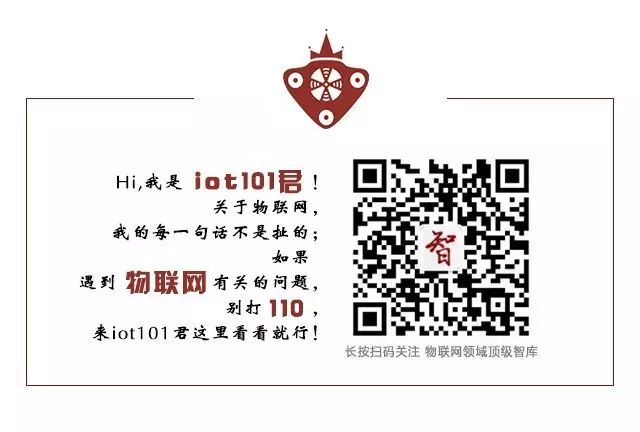
Author: Zhao Xiaofei
IoT Think Tank Original
Reprint with source and origin indicated
—— [Introduction] ——
Debates over the high costs of NB-IoT network services during its initial commercial phase are inevitable. However, the dynamic adjustment of service fees post-commercialization will likely fall within the tolerance of most users. Instead of fixating on these short-term costs, we should focus more on the transformative impact that network commercialization will bring to industry applications.

China is once again at the forefront of NB-IoT commercialization. On June 26, Deutsche Telekom’s NB-IoT package became a hot topic, and a few days later, the news that “China Telecom launched the world’s first NB-IoT service package” became a sensation. Many explained that China Telecom had actually released its NB-IoT service package on June 20, 2017, thus making the claim of being the “world’s first” legitimate. However, the industry’s interest seems less focused on the “world’s first” and more on the evaluation of service costs, with opinions divided between those who find it reasonable and those who deem it too expensive. In my view, while debates over service costs during the initial commercialization phase are unavoidable, the dynamic adjustment of fees post-commercialization will likely be within the tolerance of most users. We should focus more on the transformative impact that network commercialization will bring to industry applications.
LPWAN Service Fees for Early Adopters
For telecom operators, the release of service packages after network deployment is a representative event marking the official commercialization of the network. Therefore, the release of the NB-IoT package will attract widespread attention in the industry, and the designation of “world’s first” certainly carries some benchmarking significance.

China TelecomNB-IoTService Fees
The connection fee for a single user is 20 yuan per year, with the minimum average annual fee for a lifecycle package being 13 yuan. This fee already has a cost advantage compared to the current 2G-dominated cellular IoT connections, and in future operations, flexible billing methods may be designed for some customers. However, although this fee is primarily based on the number of connections, since NB-IoT is more commonly used in “low-frequency, small data packet, fixed” scenarios, and previously relied mainly on data traffic billing, users habitually compare it to unit data costs, leading them to perceive this fee standard as relatively expensive. On the other hand, the high costs of supporting chips, modules, and services in the industry chain have temporarily raised the implementation costs of NB-IoT.
Deutsche Telekom’s NB-IoT package includes some data traffic requirements, with the most basic NB-IoT access package starting at 199 euros, which includes activation of 25 SIM cards for six months, each with 500 KB of data. Based on this, the average cost per connection is nearly 16 euros per year. Additionally, Deutsche Telekom is exploring a commercial model for platform usage fees after access. As a leading operator in Europe, this pricing provides a reference standard for related regional operators’ NB-IoT commercial packages.
Of course, the exploration of charging models for low-power wide-area networks is not limited to China Telecom and Deutsche Telekom. As early as July 2016, South Korea’s SK Telecom completed the deployment of a carrier-grade LoRa network and released a standard package. This package also charges based on data traffic, with SK specifying data limits for each package tier, suitable for different applications, and offering discounts for long-term customers.

SK Telecom’s LoRa Network Service Package
In May of this year, American operator AT&T announced the full commercialization of its eMTC network and introduced new LTE-M rate plans, with monthly fees starting as low as $1.50 per device. Annual plans, multi-year plans, and larger quantities will receive even greater discounts. Another operator, Verizon, announced its eMTC network in March this year, with data pricing plans starting at a minimum of $2 per device per month, while also offering customized options for bulk activation and purchases.
These early adopters of LPWAN service packages provide valuable references for later entrants. However, service fees cannot be directly compared across regions due to the distinct local characteristics of network services, unlike other goods and services that form global price comparability through free movement and competition. Instead, we should learn from their pricing design approaches.
Insights from Mobile Data Pricing: NB-IoT Fees Will Decrease Dynamically
Initially, the overall service fees for network connections may be relatively high, but there is no need to dwell on them too much. To promote the development of IoT businesses, the dilution of network construction costs will lead to a general downward trend in connection fees as the number of connections increases. We can see a glimpse of this from the declining trend of mobile data fees over the past few years.
Do you remember when 4G networks first started commercial use, and Dangdang CEO Li Guoqing joked, “If I forget to turn off the 4G network one night, I might wake up to find my house belongs to the telecom operator”? This joke highlighted the high costs of 4G services during its initial commercialization phase. However, in just three years, even low- to middle-income individuals are continuously using 4G data, and the service fees are now within their tolerance.
Since the issuance of 3G licenses in China at the end of 2008, followed by 4G licenses at the end of 2013, and now the widespread adoption of 4G, mobile data fees in the country have experienced a continuous decline. For example, in the early days of 3G commercialization in March 2009, China Mobile’s standard data fee was 0.03 yuan/KB, which was reduced to 0.01 yuan/KB by the end of 2009. Starting in April 2014, the standard data fee was further reduced from 0.01 yuan/KB to 1 yuan/MB. In April of this year, China Mobile’s fee reduction action plan mentioned that from 2014 to 2016, the average price of mobile internet data dropped by a cumulative 63.5%. This year, the national “speed up and reduce fees” plan also requires a 30% reduction in data fees within the year. Based on this, since the beginning of 3G commercialization in 2009, mobile internet data fees have cumulatively decreased by over 98%, and this 98% reduction has significantly contributed to the rapid development of mobile internet in China over the past few years.

Trend of Declining Mobile Data Fees in China from 2009 to 2016
As early adopters, both China Telecom and Deutsche Telekom are continuously exploring the commercial model for NB-IoT. The connection fees for carrier-grade LPWAN networks, including NB-IoT, eMTC, and LoRa, will inevitably continue to decrease, similar to the trends seen in 3G/4G data fees. Of course, the rate of decrease may not be entirely consistent with that of 3G/4G, but it is certain that as the number of connections increases, network connection fees will be adjusted to a level that the vast majority of users can afford. Therefore, rather than fixating on the current fee levels, it is better to focus on practical applications and explore feasible future pricing levels.
The “Leverage” Role of Operators: An Unfortunate Exploration
In addition to fee reductions, telecom operators are also strengthening their “leverage” role in IoT industry applications. Although revenue does not rise rapidly after deploying the basic network, operators will further promote collaboration within the industry ecosystem to facilitate more device connections, even providing comprehensive solutions for industry users to accelerate the implementation of IoT applications. At this point, the support of operators’ networks for the entire industry will continue to rise.

To become wealthy, one must first build roads. The readiness of network infrastructure spurs the emergence of numerous new economic models. In the mobile internet sector, various popular apps, ride-hailing services, O2O, live streaming, etc., would not have had such a significant impact without the comprehensive mobile data networks provided by operators. However, the reality is that while new economic models continue to grow, creating massive employment opportunities, telecom operators invest heavily in building and optimizing networks to meet the data traffic demands of these new economic models. Yet, the explosive growth in data traffic has not led to a corresponding increase in revenue; instead, it has resulted in incremental growth without proportional income, leading to high-pressure KPIs and endless overtime for frontline employees. Operators play a “leverage” role in these new economic models but do not receive proportional returns, instead serving as a means for others to benefit.
In the future, the IoT will give rise to more new economic models, with the greatest beneficiaries being the innovators of these economic models and various industries applying IoT. Operators have done a lot of “road building” work to create new economic models for IoT, and they are also exploring ways to share in the dividends brought by IoT. However, a mature model has yet to emerge, and the first priority remains their expertise in “connections.” In the early stages of IoT network infrastructure deployment and commercialization, there will undoubtedly be significant dissatisfaction and complaints regarding network quality and service fees. However, over time, as network deployment and optimization reach a certain level and the number of connections gradually dilutes network costs, these complaints will gradually dissipate, and the dividends of IoT will begin to be released. But how much of these dividends can operators, who initially invested heavily in “road building,” obtain without bringing about a “leverage” effect for the entire industry? Will they still primarily rely on massive connections to generate revenue?
Now, as various new economic models in the mobile internet sector develop vigorously, while everyone enjoys the convenience brought by affordable mobile networks, who will still remember the joke about “if I forget to turn off the data one night, I might lose my house”? Similarly, years from now, when the various economic models spawned by IoT bring trillions in dividends, who will still recall the debates over the high connection fees of NB-IoT networks in July 2017?

Previous Popular Articles (Click on the title to read directly):
-
“How Difficult Is It to Make Smart Locks for Shared Bicycles?”
-
“Cognitive Computing, Blockchain IoT, IoT Security… Those Who Understand Will Control the Future”
-
“KUKA, ABB, Fanuc, Yaskawa, Four Industrial Robot Giants Have Long Been Stationed in the IoT Field”
-
“[Heavyweight] IoT Industry Panorama Report, Leading the Domestic IoT Industry’s Two-Dimensional Perspective”
-
“A Cartoon Explains: Besides WiFi and Bluetooth, What Can the Recently Popular NB-IoT Do?”
-
“A Cartoon Explains: Behind NB-IoT, What Is the LoRa Everyone Is Talking About?”
